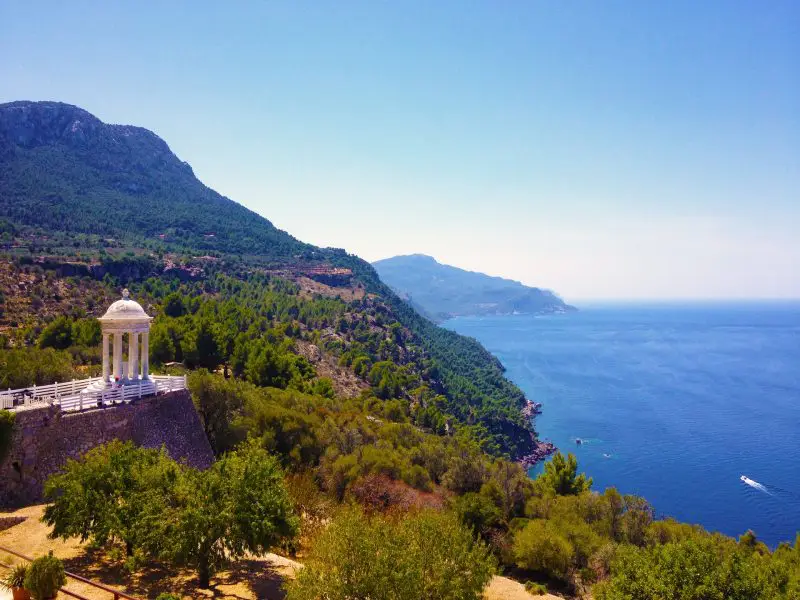Welcome to Animals and Wildlife in Spain!
Spain is such an exciting and vibrant country in the world, often associated with delicious food, stunning beaches, architecture, and vivacious culture. Wildlife in Spain is something more discrete and in the background.

This blog is going to highlight and show appreciation towards the beautiful wildlife in Spain. Enjoy!
#1 Iberian Lynx

The Iberian lynx, currently the world’s most endangered feline species, is experiencing a resurgence thanks to conservation efforts. From a population of fewer than 100 individuals in 2002, their numbers have now exceeded 400 in the Mediterranean forests of the Iberian Peninsula. The ambitious LIFE Iberlince conservation initiative is actively working to reclaim lost lynx territories in Spain and Portugal.
The Iberian lynx stands out with its distinctive heavy spotting and smaller stature compared to its Eurasian counterpart. It boasts long legs and a short tail with a black tip, complementing its tawny coat adorned with dark spots. Prominent black ear tufts and a characteristic “beard” around its face complete its unique appearance.
Female lynxes typically give birth between March and April, with an average litter size of three, though only rarely do more than two survive past weaning. Kittens emerge from their dens between 8 and 23 months of age, with high mortality rates during this dispersal phase.
While the Iberian lynx primarily preys on wild rabbits, it adapts its diet to include ducks, young deer, and partridges when rabbit populations are scarce. An adult lynx requires roughly one rabbit per day, while a mother raising her young needs to catch about three.
Historically, the Iberian lynx inhabited Spain, Portugal, and Southern France in the early 19th century. However, its numbers steadily declined throughout the 20th century. By the early 2000s, only two isolated breeding populations remained, totaling about 100 adult individuals, with just 25 breeding females.
Through collaborative efforts involving the Spanish national and regional administrations, various NGOs like WWF, and support from the European Union through projects like Life, this species has been rescued from the brink of extinction. In 2015, the IUCN reclassified the Iberian lynx as “endangered” due to the increase in mature individuals since 2002. The 2014 census reported 327 individuals in the species’ strongholds in Andalucia. Moreover, around 50 lynxes have been reintroduced into areas covered by the LIFE Iberlince project, including Sierra Morena and Montes de Toledo in Castilla-La Mancha (Spain), the Matachel Valley in Extremadura (Spain), and Guadiana Valley in Portugal since the summer of 2014.
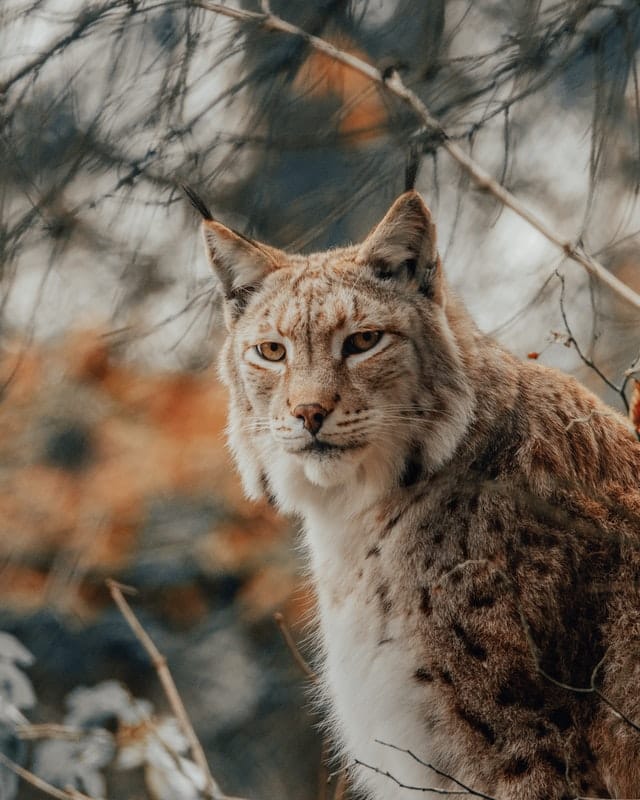
Reintroduced lynxes owe their presence to the ongoing Iberian Lynx Ex-situ Conservation Programme, a lifeline for this endangered species. A beacon of hope, the program witnessed 53 cubs born in 2015 and a census in the same year recorded 404 adult lynxes. However, while these developments offer optimism, the Iberian lynx’s future remains precariously balanced, plagued by persisting challenges.
A dwindling food supply poses a significant threat, with rabbits serving as the primary prey for these lynxes. Epidemics like myxomatosis and hemorrhagic disease have taken a toll on rabbit populations, indirectly impacting the Iberian lynx population. WWF is urging Spanish authorities to intensify efforts to revive rabbit populations.
Another formidable adversary is vehicular collisions, a consequence of high-speed road and highway construction fragmenting the lynx’s habitat. The year 2014, in particular, witnessed a grim toll, with 22 lynxes falling victim to vehicular accidents, an alarming number given the species’ modest population size. Following a WWF campaign, Spanish national and regional authorities are taking steps to implement road safety measures.
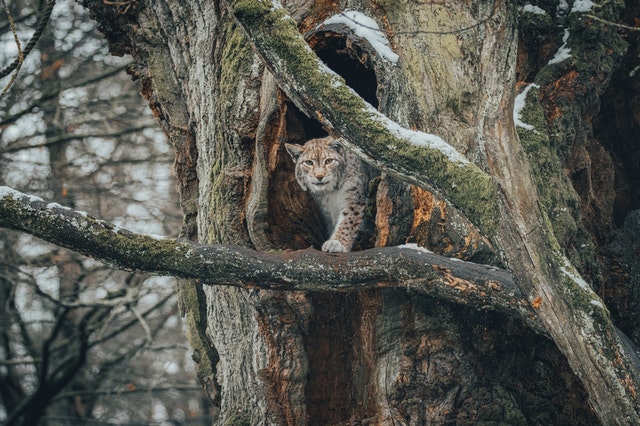
Habitat loss and degradation: Infrastructures like roads, dams, railways and other human activities contribute to the loss and fragmentation of the Iberian lynx distribution area, creating barriers between the different populations.
The expanding road network has also led to more fatalities on the roads. It is thought that between 1960 and 1990, the Iberian lynx suffered an 80% loss in its range.
Illegal Hunting: Ironically, in the past the species was regarded both as an attractive hunting trophy and as a vermin. Hunters prized its valuable fur and its meat, and although some landowners appreciate its tendency to keep fox and rabbit numbers down, most perceive it as a threat to their game populations.
The Iberian lynx was legally protected against hunting from the early 1970s, but they are still the victims of guns, traps and snares, particularly those set for other animals.
#2 Spanish Ibex
Spanish ibexes, resilient mountain dwellers, stand out with their robust hooves and short legs, perfect for navigating bare, rugged slopes. Their color palette typically ranges from brownish to grayish, with males taking the size and weight crown, sporting impressive horns compared to their female counterparts.
These magnificent creatures call the Spanish Iberian Peninsula home, with some venturing as far as the coast of Portugal. They prefer rocky habitats adorned with cliffs, scrub, and various types of trees.
In the realm of social dynamics, Spanish ibexes are a fascinating lot. For most of the year, males and females lead separate lives, while the young ones stick close to adult females for safety. During the rutting season and the rest of winter, mixed groups come together. They’re diurnal creatures, often found in proximity to human settlements, and they’ve got a unique way of alerting their companions to potential predators. Picture this: an ibex stands tall, ears and head aimed at the perceived threat, then lets out one or more alarm calls to signal others. Once the message is received, the group orchestrates a coordinated escape to a rocky slope, beyond the predator’s reach. Leading the charge are seasoned adult females and males, depending on the group.
When it comes to dining, Spanish ibexes are herbivores, munching on forbs, grasses, and Holm oak acorns.
In the realm of romance, Spanish ibexes embrace polygyny. During the rutting season in November-December, males engage in spirited head-butting competitions to earn the privilege of mating with females. After a gestation period of around 161-168 days, females welcome 1 or 2 adorable kids into the world.
During the birthing season, yearlings part ways with the female groups, with males returning to their male-only clans and female yearlings eventually reuniting with their mothers, spending the next few years in familial togetherness. Females hit reproductive maturity around 1.5 years old, while males are primed for breeding at the age of 3.
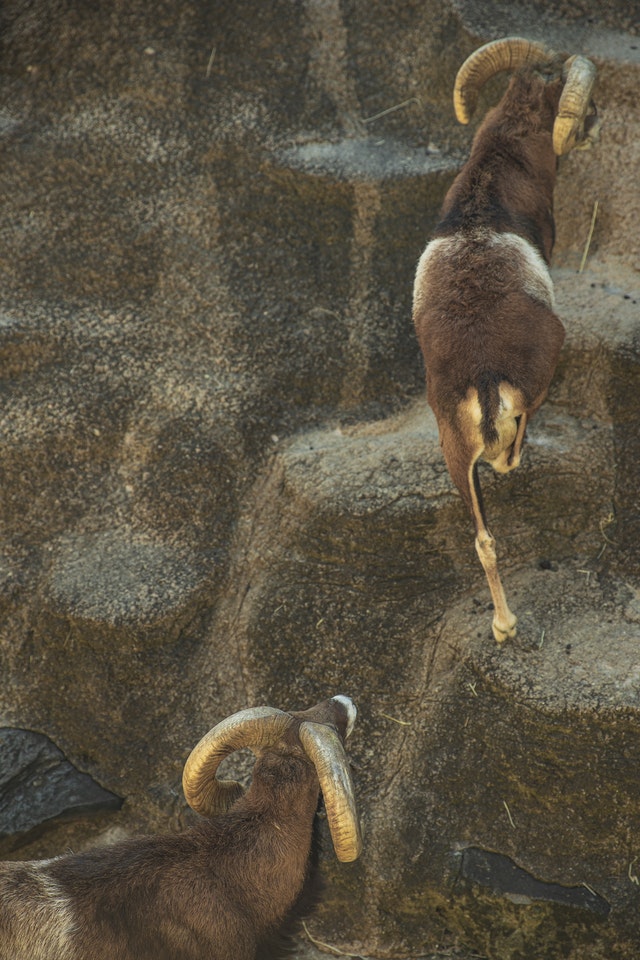
Hunting pressure, agricultural development, and habitat deterioration are the main threats due to which the populations of Spanish ibexes have decreased significantly over the last centuries. Future threats to these animals include population overabundance, disease, and potential competition with domestic livestock and other ungulates, along with the negative effects of human disturbance through tourism and hunting.
According to the IUCN Red List, the total population size of Spanish ibexes is around 50,000 individuals.
There are estimated populations of the species in the following areas: Sierra Nevada – 16,000 individuals; Sierra de Gredos – 8,000 individuals; Maestrazgo – 7,000 individuals; Serranía de Ronda and Sierras de Grazalema – 4,000 individuals; Puertos de Tortosa y Beceite Natural Park – 4,000 individuals; Cazorla – 2,500 individuals; Sierra Tejeda y Almijara – 2,500 individuals; Sierras de Antequera – 2,000 individuals; Sierra Morena – 2,000 individuals and Muela de Córtes – 1,500 individuals. In 2003 the Portuguese population included around 75 individuals.
Currently, Spanish ibexes are classified as Least Concern (LC) on the IUCN Red List and its numbers today are increasing.
#3 Great Bustard
The Great bustard is a member of the bustard family and the only member in the genus Otis. One of the heaviest birds alive today that can fly, it is found across Europe. Huge, robust but stately looking, adult males have a bulging neck and a heavy chest, with a characteristically cocked tail.
Male Great bustards in breeding plumage have white 20cm-long moustachial whiskers, vivid back and tail colors, and a russet band of feathers on their breast and lower neck that widens with age. They walk upright and fly with powerful wing beats.
Endemic to central and southern Europe and temperate Asia, they inhabit grasslands, steppe areas, and open farmland. They have notable sexual size differences, leading to separate male and female groups most of the year. Females tend to flock together and remain in their natal areas for life. In winter, males establish hierarchies through violent fights. Some populations migrate.
They are omnivores, feeding on vegetation like grass, legumes, and grains, as well as small mammals, birds, insects, and more.
Males perform elaborate courtship displays at leks. Breeding season is March, with eggs laid in May-June. Clutches usually have 2-3 eggs, incubated by the female for 25-30 days. Chicks leave the nest immediately and fledge around 30-35 days old.
The Great bustard faces habitat loss due to land use changes and human activity. Classified as Vulnerable, the population is decreasing, with 44,000-57,000 individuals according to the IUCN Red List.
Wildlife in Spain: Eurasian Beaver
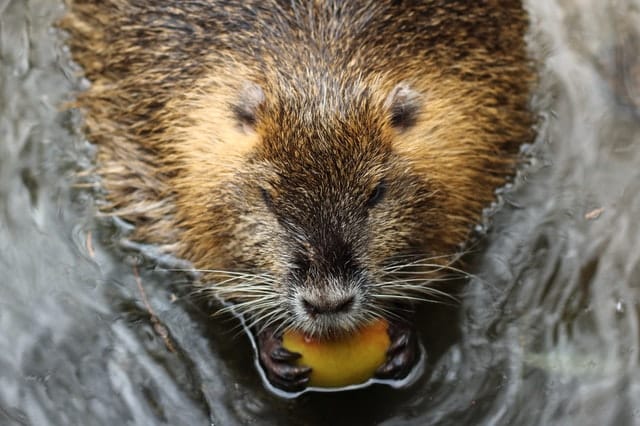
The Eurasian Beaver inhabits woodlands, slow-moving river valleys, floodplains, and similar environments. It’s a large rodent with a robust body, short neck, and limbs. Its distinguishing features include a sizable, flattened, scale-covered tail and webbed hindfeet. Notably different from smaller coypu and muskrat, its tail shape sets it apart.
These beavers possess large incisor teeth covered in orange enamel. They typically measure between 74-90 cm in length, with a tail length of 28.5-38 cm and hindfeet measuring 16-18 cm. Their weight falls in the range of 12.5-38 kg. Remarkably, Eurasian beavers can live for an average of 7-8 years and can reach up to 25 years in the wild.
Once believed to be extinct in Great Britain, Eurasian beavers have been successfully reintroduced in certain regions, including Scotland, Devon, Cornwall, and Kent. They are also found in various parts of Europe, including Spain. Their diet comprises rhizomes, pond weeds, grasses, water lilies, ferns, and leaves in the summer, while in the winter, they feed on bark from aspen, willow, poplar, and alder. In harsh environments, they stash food on the bottom of watercourses near their lodge.
Eurasian beavers often utilize natural holes or burrow into riverbanks. The entrance to their burrows is typically below water level, leading to a nest chamber. Bank burrows are usually 1.5-2 meters high above the entrance. In cases where burrows and bank lodges aren’t available, they construct lodges entirely from woody debris, soil, and twigs.
They are often found in small family groups, consisting of a monogamous adult pair, young-of-year, and sometimes young from the previous year. Group sizes can increase with population density. Territory size varies depending on habitat, density, and season, generally spanning 3 km but ranging from 0.5-12.8 km.
Predators in Europe include wolves, wolverines, lynxes, and red foxes. Eurasian Beavers engage in monogamous breeding between December and April, with a pregnancy lasting 103-108 days. Litter sizes range from 1-6 young, born between May and June. While individuals reach sexual maturity at 2 years old, they are unlikely to breed successfully until they are 3 years old.
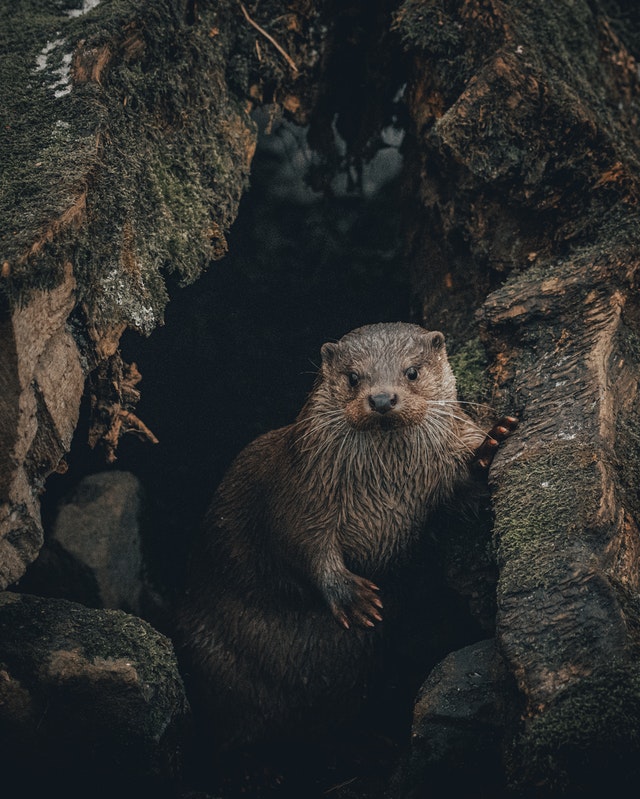
Conservation Status: The Eurasian beaver is deemed by the IUCN as endangered in Scotland and not assessed in the rest of Great Britain.
Since the recent reintroductions the population numbers are rising with the Mammal Society’s study in 2018 indicating there are now 168 individuals.
Current threats are due to socio-economic interests as beavers can drastically alter the rivers they live in, which can result in land belonging to farmers flooding and causing crops to fail.
Summary of Wildlife in Spain
Wildlife in Spain is stunning and diverse. One cannot ignore the threats that these native species are under and we must always be conscious of conservation efforts happening!
If you found this particular blog interesting, you may enjoy reading about Wildlife in Greece, or Wildlife in Germany.
- Best Places to See Brown Bears - April 19, 2024
- Animals in Greece - April 19, 2024
- Pangolins: The Complete Guide - April 19, 2024

